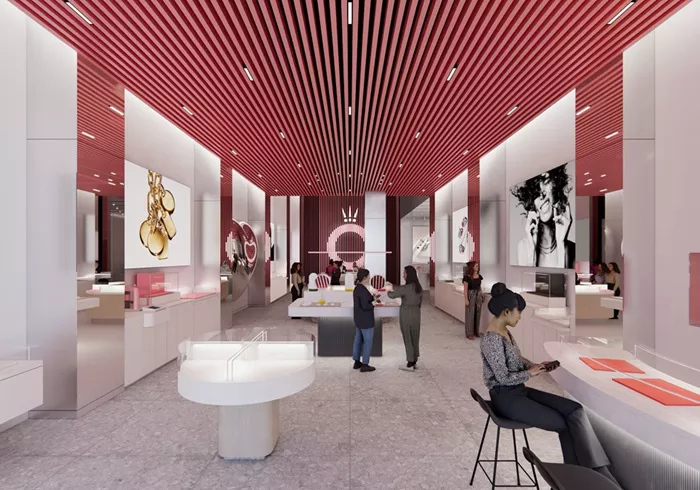Pandora Jewelry is opening its first U.S. flagship store today on the Las Vegas Strip, marking a major expansion in the American market. The new store covers 3,000 square feet, making it about three times larger than the typical Pandora concept store. Its design aims to match the excitement and spectacle of its iconic location.
This move comes at a challenging time. The company is facing potential tariff increases under the U.S. administration’s trade policies. Still, Pandora is performing well. In the first quarter, it saw a 7% rise in organic global revenue, reaching $1.1 billion. The U.S. led the growth with a 12% increase. Last year, the U.S. accounted for nearly one-third of Pandora’s $4.8 billion in global revenue, making it the brand’s biggest and fastest-growing market.
Pandora’s main manufacturing base is in Thailand, which could face a 37% tariff once a current 10% tariff pause ends in July. Despite this, the company remains strong financially. Pandora boasts an 80% gross profit margin—much higher than the 67% seen at LVMH and Richemont. Its earnings before interest and taxes (EBIT) margin stood at 23% last year, and the company expects this to reach 24% by the end of this year, even with currency challenges.
CEO Alexander Lacik addressed investor concerns during a recent earnings call. “Despite the noises around us, we generally like to keep things simple in this company,” he said. “Pandora is and will be very profitable as a company.”
Planning for Tariff Changes
Pandora has prepared for two potential tariff outcomes. In the best-case scenario, the current 10% tariffs stay in place, excluding China. In this case, the company expects a financial impact of $38 million in 2025 and $46 million in 2026. Some relief will come from routing shipments to Canada and Latin America directly instead of through the U.S., starting in 2026.
In the worst-case scenario, tariffs announced in April would resume. These include 37% on Thai imports, 46% from Vietnam, 26% from India, 20% from Italy, and 145% from China. Under this outcome, Pandora projects a $76 million cost in 2025 and $137 million in 2026.
Considering Pandora made $1.5 billion in U.S. revenue last year, the best-case impact would be about 2–3% of its total. The worst-case scenario would be more difficult. However, Thailand is reportedly keen to negotiate a deal. Pandora, as one of the country’s largest employers, has strong ties with Thailand’s Board of Investment. Still, Lacik noted, “I don’t think that the jewelry category is top of the Trump administration’s agenda necessarily.”
Pricing Strategy and Brand Direction
Raising prices may be necessary if tariffs rise, especially if Thailand fails to secure better terms. Pandora increased prices by 5% last October and plans another 4% hike in April 2025. Yet, CFO Anders Boyer said, “We’re not at this point in time assuming that we’ll do extraordinary price increases.”
If price increases do happen, they will be targeted. The company may take smaller increases in the U.S. and apply them globally to stay competitive in its most important market. “We have some maneuverability simply because we are a global player,” Lacik explained.
Pandora is also evolving its product line. It is expanding beyond charms and bracelets to become a full jewelry brand. Boyer stressed the importance of keeping prices accessible. “We are super conscious of remaining an accessible brand,” he said.
Regardless of what happens with tariffs, Pandora plans to stick to its core promise—offering hand-finished, high-quality jewelry at prices that let customers express their personal style.
Related topics:
- ‘Smash-and-Grab’ Burglary Hits South Loop Jewelry Store, Police Report
- Lawrence Man Pleads Guilty to Armed Robbery of Jewelry Store
- Richemont Reports Strong Growth in Jewelry Sales, Decline in Watch Revenue


